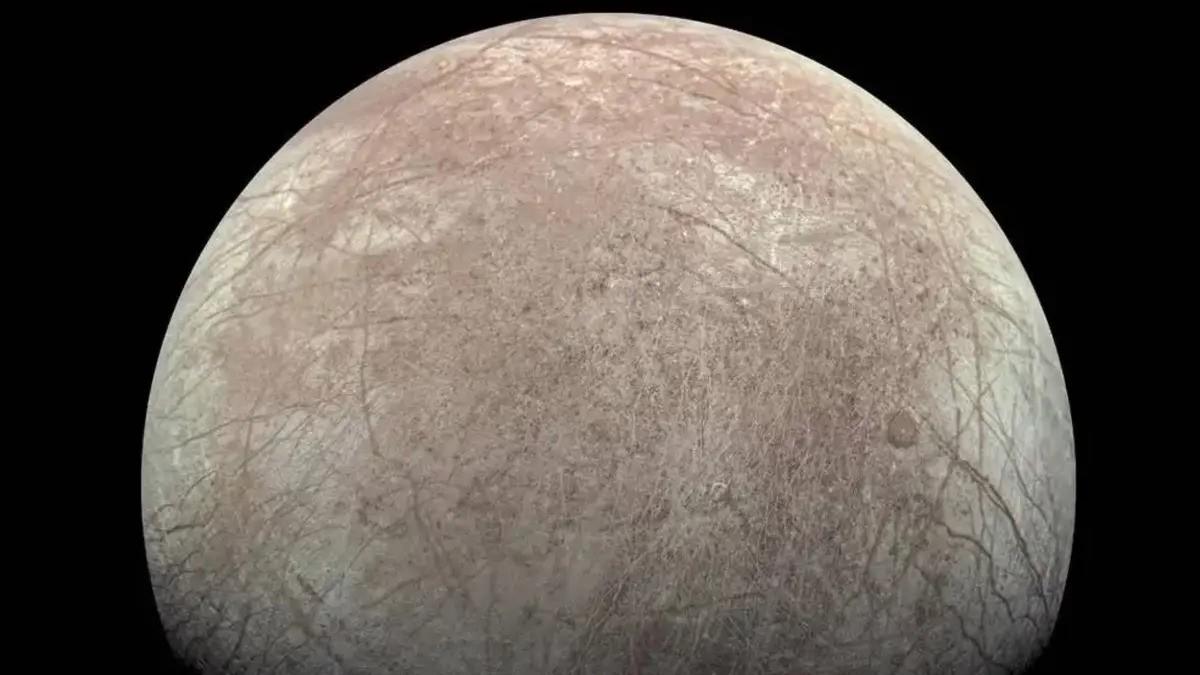Recent data from NASA’s Juno spacecraft could change what we know about Jupiter’s moon Europa. The information suggests Europa makes a lot of oxygen, about 1,000 tons a day, enough to support a million people for a day. Juno’s Jovian Auroral Distributions Experiment (JADE) instrument found this out when it flew close to Europa in September 2022, getting within 220 miles of its surface.
The JADE instrument is made to study hydrogen coming off Europa’s icy surface. It showed that Europa makes about 26 pounds of oxygen every second. This data is really important because it helps us understand how Europa makes oxygen and what it could mean for the possibility of life there. Scientists think some of this oxygen might go into Europa’s underground ocean, where it could help support living things.
The process behind this oxygen production is attributed to the interaction of Europa’s surface with ionized particles from Jupiter’s magnetic field. These particles bombard Europa’s icy surface, breaking down water molecules into hydrogen and oxygen.
“Europa is like an ice ball slowly losing its water in a flowing stream. Except, in this case, the stream is a fluid of ionized particles swept around Jupiter by its extraordinary magnetic field,” said Jamey Szalay, JADE scientist from Princeton University in New Jersey in the press release.
Szalay further explained: “When these ionized particles impact Europa, they break up the water-ice molecule by molecule on the surface to produce hydrogen and oxygen. In a way, the entire ice shell is being continuously eroded by waves of charged particles washing up upon it.”
These findings hold significant implications for our understanding of Europa’s potential to harbor life beneath its icy crust. Previous research has suggested the existence of a subsurface salty ocean on Europa, further fueling speculation about the moon’s habitability. Scientists believe that missions like NASA’s upcoming Europa Clipper, slated for launch and arrival at Jupiter in 2030, will provide invaluable insights into Europa’s subsurface ocean and its potential to support life.
“Our ability to fly close to the Galilean satellites during our extended mission allowed us to start tackling a breadth of science, including some unique opportunities to contribute to the investigation of Europa’s habitability,” said Scott Bolton, Juno’s principal investigator from the Southwest Research Institute in San Antonio in the press release.
Also, scientists are looking at more than just Europa. Ganymede, another moon of Jupiter, is also thought to have a hidden salty ocean. With research still happening and missions like Juno’s planned flybys and the Europa Clipper mission, scientists are hopeful they can solve the puzzles of these faraway places and maybe even find signs of alien life.

